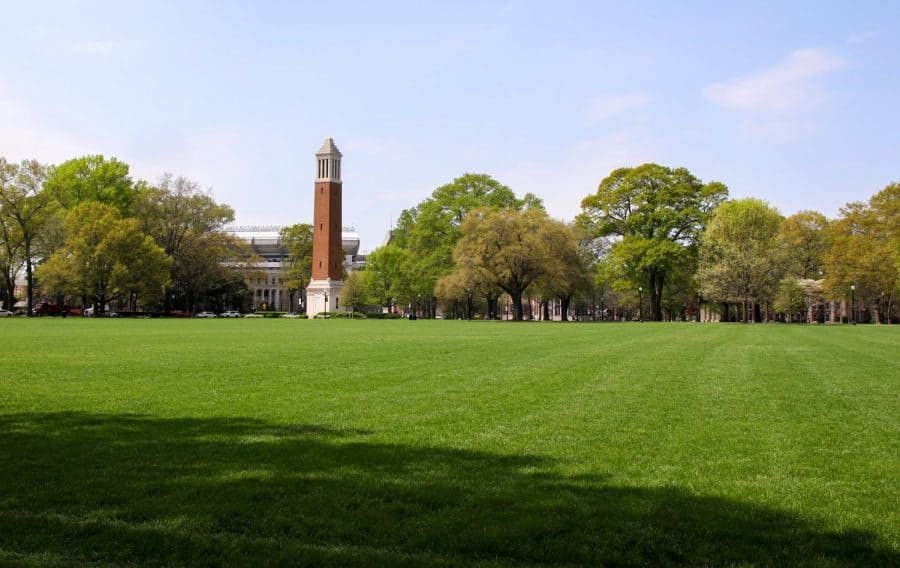Opinion | A few simple rules of design make campus beautiful
Most would agree that the UA campus is objectively beautiful. But what if I told you it was literally objectively beautiful?
March 31, 2021
If more places applied the same level of care and foresight to their architecture and landscape as the University does, the world would be a prettier place. I don’t mean to say that everything should look like our campus or center around Greek revival-style architecture, but that greater standards and an overarching vision should be pursued in architecture as a whole.
So what is lacking in much of today’s architecture? I think the answer lies between two points: overreliance on the subjective and a lack of vision.
Subjective vs. objective
Many fail to separate the subjective and objective. Subjective themes have certainly become more mainstream these days and are perhaps a major tenet of modern art. Subjective is based on personal opinions, interpretations, beliefs and emotions. When you hear someone say that “beauty is in the eye of the beholder,” well, they’ve just summarized the subjective.
The objective, on the other hand, is fact-based. It’s measurable or quantifiable, and it is observable. Many of the characteristics of Renaissance art would identify with the objective because they follow specific styles, principles and themes.
Of the buildings built in the 21st century, few rank among the greatest in architecture. Those that are considered great usually don’t make the grade for their aesthetics or beauty, but for something statistical, like height.
If you’re wondering why you should even bother caring about something like architecture, maybe take a minute to step outside. Man-made structures surround us, creating the spaces where we live and work and affecting our mental and physical health. And beyond its wellness implications, architecture sends us signals about who and what are important. There’s a reason that phrases like “corner office” and “get in on the ground floor” conjure up certain ideas in your head.
Our campus is widely admired not just because of its architecture, but more specifically its objective framework. The University is aesthetically consistent without being boring. A consistent building style, orderly layout and embrace of locale make the campus enviable. And that’s a short list that doesn’t even mention how the campus highlights visible life with its green spaces and walking accessibility. According to one group of critics, the UA campus would easily meet their six fundamental requirements of attractive cities.
Looking at the long-term
The campus’s primary success in beauty comes from two things that are always hard to replicate en masse—a vision and hard work. Long-term planning on such a large scale is a generational commitment and requires more creativity than capital. But the University was successful in it, and if more cities and institutions did, we’d have a lot more places to enjoy rather than just the rare college town or European city.
UA President Emeritus Robert E. Witt knew that the University’s ambitions would require multigenerational commitments when he said: “As we walk the Capstone today, we enjoy the shade of trees we did not plant, the music of chimes we did not build and the benefit of programs we did not initiate. However, it’s now our time and our responsibility to provide for the future. It’s time to plant trees whose shade we will not enjoy and support the education of young men and women yet to be born.”
With the sunny summer days now upon us, take a walk around. Enjoy all of the beautiful spaces on our campus, but don’t accept our surroundings as a rarity. Instead, strive to build more places like it.








